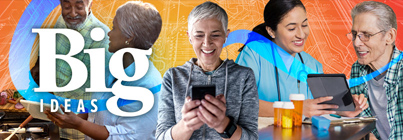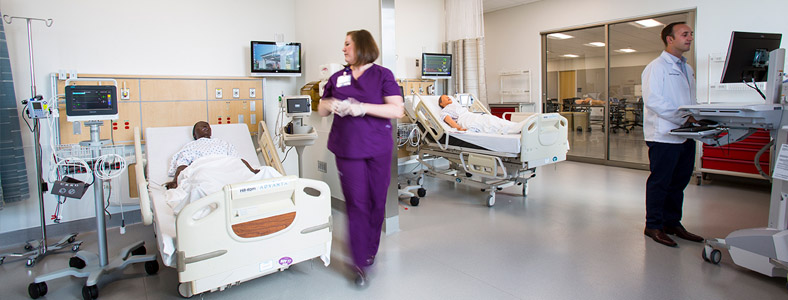
Simulating reality to learn life-saving skills
Long before commercial pilots get in the cockpit of a plane full of passengers, they log countless hours of flight time, many of those in-flight simulators. The real-life scenarios presented in simulation without the risk of damaging or downing a plane are invaluable. Nursing, nurse practitioner and physician assistant students benefit from simulated environments as well. Through simulation-based learning, graduate students experience clinical-care situations in real time without risking safety.
Once they leave the clinical setting, students and faculty review their actions and ask questions in a debriefing that provides a deeper understanding of the students’ roles and decisions.
“The simulation ensures students experience both typical health care situations and those that not all students encounter before they graduate, like a person nearing the end of life and dying,” says Terri Harvath, executive associate dean. “The suites create a fluid interchange between all aspects of their education.”
Read more about simulation education at the School of Nursing. »
Home Health Simulation Suite
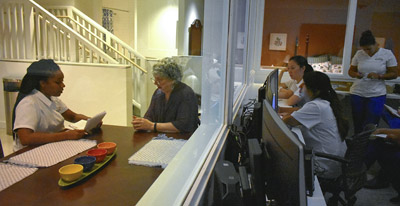
This one-bedroom apartment suite is used to prepare health professionals to care for people in their homes. Half walls and high-tech debrief area promote watch-and-learn activities. Features include:
- Full-functioning kitchen and bathroom
- Stairways, ramps and other mobility challenges
- Fully furnished rooms to mimic common home environment
Primary Care Simulation Suite
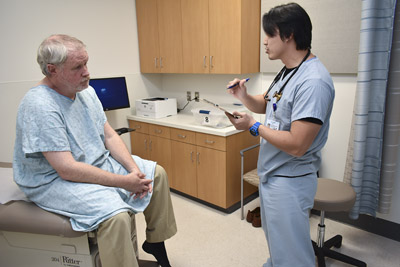
In this suite of 15 exam rooms, each complemented by a debrief room, future health providers learn how to care for and communicate with patients and families, and then discuss decisions made after the clinic encounter. These experiences develop critical-thinking and decision-making skills. Features include:
- Realistic environment including waiting room
- High-tech audio-visual capabilities with connectivity between exam and debrief rooms
- Supports use of both high-fidelity manikins and patient actors
Hospital Ward Simulation Suite
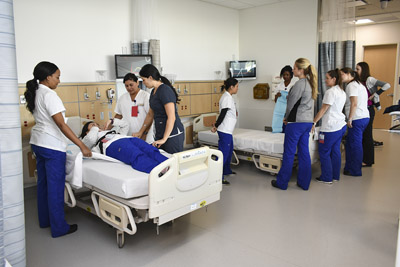
Through simulation-based learning, students experience clinical-care situations in real time. Simulations range from common, clinical procedures to responding to rare and complex health conditions or life-threatening emergencies. Features include:
- 8-bed hospital ward
- 1 intensive care room
- High-tech audio-visual capabilities to promote watch-and-learn activities
Task Training Lab
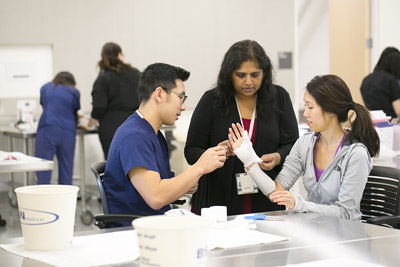
This lab provides flexible space for students to learn basic skills, such as suturing, starting an IV or placing a catheter. Many clinical tasks require repeated practice of a specific skill. In this lab, students use lifelike models of body parts or specific devices, called task trainers. These trainers break down a specific task into easily grasped actions. Features include:
- Space to accommodate several students practicing a skill repeatedly
- Storage facilities for multiple training devices and materials
- Flexible space to support both individual and multiple group functions





